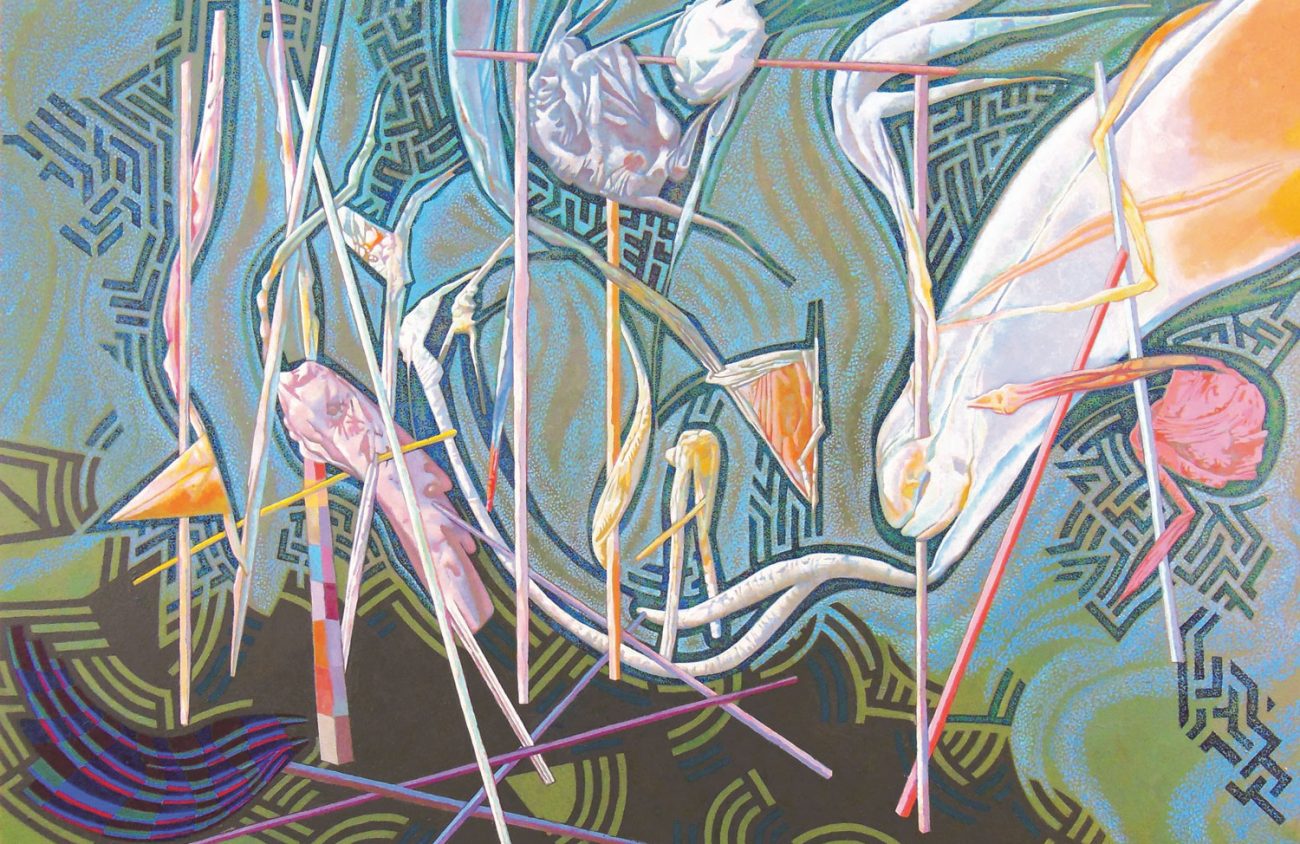Craig Spilman last served on the board at Maude Kerns Art Center about 50 years ago. This was before he joined the art faculty at Lane Community College, and definitely before he retired from that position.
In fact, Spilman’s time at the art center in the late ’60s and early ’70s led him indirectly to the LCC job. He taught at the art center before the LCC campus was complete, when it was offering its art classes at the center.
Spilman’s vision for the center was then, as now, to support professional as well as amateur artists. This year, newly appointed MKAC executive director Michael Fischer offered Spilman the opportunity to support professional artists, many of whom have their own histories with the center, when he provided Spilman with a guest curatorship.
“It’s a bit of a homecoming,” Fischer says about the artists Spilman selected to show.
For Spilman the choice was easy: Select five established artists whose life work has strong ties to Lane County. Curator’s Choice: Lane 5 runs at MKAC until May 10, with a curator’s talk 2 pm Saturday, May 4.
The artists Spilman chose are Weltzin Blix, Margaret Coe, John Jay Cruson, Analee Fuentes and Dennis Gould.
Three of the five are also part of the Visual Magic invitational exhibit that runs through May 12 at the Jordan Schnitzer Museum of Art. That exhibit features artists who started their professional careers in Oregon during the ’60s and ’70s.
“It was just coincidence,” says Spilman about the crossover. He didn’t know about the museum show when he chose his artists. His goal for the MKAC show was to bring in artists whose work adds to the visual culture of Lane County.
Visual Magic at the museum displays a large number of artists, but most are represented by just one work. The show at MKAC displays numerous artworks by each participant, giving us the chance to become more familiar with who they are as artists.
Spilman has known the Lane 5 to varying degrees; he has spent time with them, been to some of their homes, and has seen their work evolve over the past 25 to 50 years. Some have changed their approach more than others, but all have in common — besides their connection to the center and Lane County — abilities that Spilman admires.
“I chose them because they do things I can’t do,” he says. Spilman primarily draws, mostly in black and white tones, while the artists he chose, he says, are outstanding colorists.
Having a curator’s choice exhibit at MKAC is something Fischer was thinking of before he became executive director. Fischer likes the idea of giving guest curators absolute freedom and encourages them to use the gallery spaces however they want.
He gave those same directions to artists Christopher St. John and Shelly Fredenberg as they prepared to put up their show Singing the Animal, Singing Nature that came down last month. But this is the first official Curator’s Choice exhibit at the center. Next year’s guest curator will be Fuentes.
Besides being one of the Lane 5, she is a member at MKAC and shows regularly in the center’s yearly Dia de los Muertos show.
Printmaker and painter Cruson’s earliest connection to the center was in the 1960s teaching a summer class to teenagers. Over the years he’s participated in various juries. He is represented in Eugene by White Lotus Gallery.
Surrealistic painter Gould says, “Maude Kerns has been in my life since 1960.” He went to its present location to attend a friend’s wedding when the building was still a church. After it became an art center he had a solo show there in 1968 — which also served toward his qualifying exam for his MFA degree.
Blix, a sculptor, taught sculpture and ceramics at the art center in 1969 and 1970. He has created public art for Eugene as well as numerous other cities.
Margaret Coe, who regularly exhibits at Karin Clarke Gallery (Clarke is her daughter), also taught art at the center as well as at Lane Community College and the University of Oregon.
Spilman chose these specific five artists because he admires their work and because they’ve made “significant visual contributions to our area.” But he’d be easily able to choose another five artists next year, he says, and the year after that. There is, he says, no shortage of excellent, established artists in the area.
